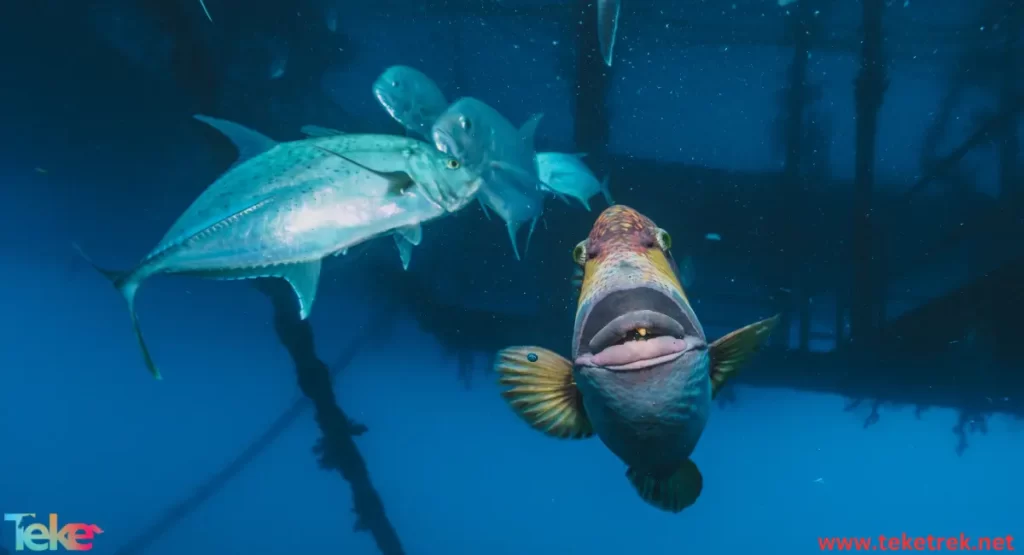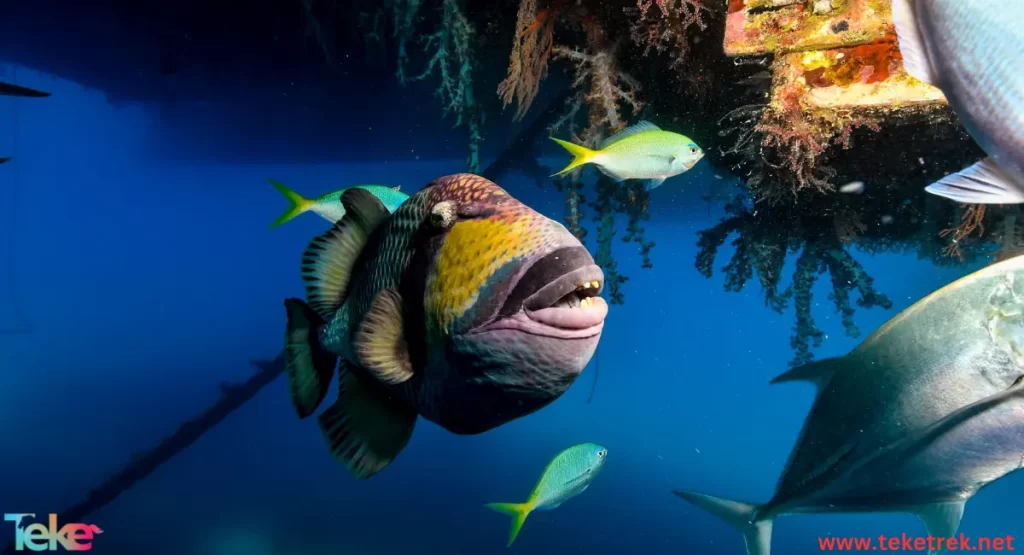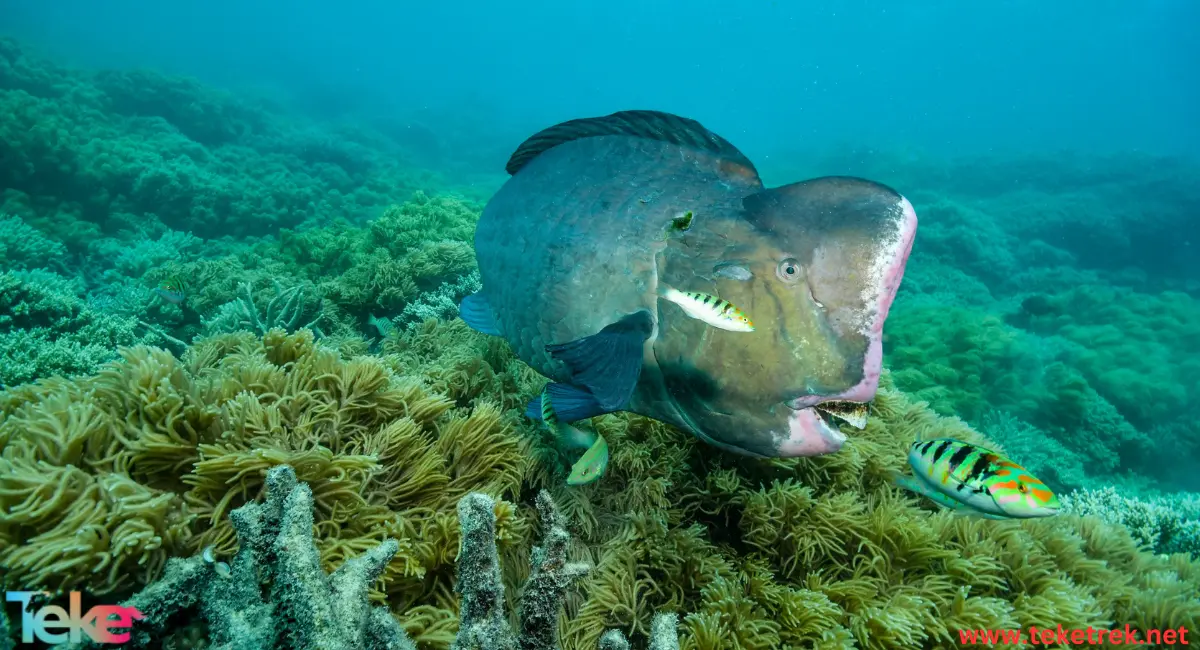The Anglerfishs are indeed one of the most fascinating creatures of the sea. With various species of anglerfish living in oceans around the world, they have adapted in some interesting ways to survive. All anglerfish share a common feature: a modified dorsal fin that acts as a lure to attract other fish directly into the anglerfish’s mouth.Let’s explore more about these fascinating creatures from teke trek.

Characteristics of the Anglerfish
The Anglerfish possess very distinctive traits that help them blend in and adapt. One of the most prominent features found in all anglerfish is the first modified dorsal fin, known as the “illicium,” which extends like a fishing rod. At the end of the illicium is a small piece of skin called the “esca,” used as bait to attract prey, which the fish can move.
Many anglerfish, especially those living in the deep sea, have gills that use bioluminescence to attract prey. Anglerfish that use this type of lure, such as the humpback anglerfish, are capable of producing light through a symbiotic relationship with luminescent bacteria.
Evolution of Anglerfish:
There are hundreds of anglerfish species worldwide, each perfectly adapted to its unique environment. For example, the European anglerfish, also known as the common monkfish, has evolved to camouflage itself in the sand and seaweed. The red-lipped batfish, which cannot camouflage, has developed a mottled brown skin that helps it hide when viewed from above and is also characterized by a bright red color around its mouth. Deep-sea anglerfish have adapted as well, with black skin that absorbs the little light that reaches them, helping them blend into their dark environment and reducing the chance of their prey noticing them while being lured by the anglerfish’s light.
Life Cycle of Anglerfish:
The Anglerfish is non mammals, Despite the variety of anglerfish species, they all share the same life cycle:
Eggs and Larvae:
The female anglerfish lays her eggs in a unique way. Instead of laying a cluster of eggs like many other fish, she lays a gelatinous layer filled with eggs. This layer is then fertilized by a male anglerfish before being left to float in the water. Once developed, anglerfish larvae hatch and emerge from the gelatinous layer, feeding on small plankton until they grow large enough to return to the depths of the sea.
Growth Stage:
Male and female anglerfish have very different roles. Female anglerfish often grow much larger than males, which remain much smaller, with some species reaching only three centimeters in length. The primary goal of male anglerfish is to find a female to mate with.
Females tend to live longer than males. Female anglerfish are known to live up to 25 years, while male anglerfish live about 20 years.
Anglerfish habitat
The Anglerfish are found in seas all over the world, especially in the Atlantic and Southern Oceans. Some anglerfish live in shallow tropical waters, like the red-lipped batfish, while others dwell in the cold depths of the Atlantic. There are also bottom-dwelling anglerfish, meaning they live on or near the seabed.
Anglerfish diet
Anglerfish have a very broad and diverse diet. They tend to eat whatever they can find, living in an ocean teeming with life. Anglerfish eat crustaceans and sea snails, in addition to small fish that they can attract using their lure. Thanks to their large and strong jaws, they attempt to eat larger fish and squid.
The Anglerfish do not rely solely on live food; they also search for any dead material that sinks to the seabed, including sea birds and turtles.
Age and Size of Anglerfish:
The Anglerfishs can live up to 25 years. The size of anglerfish varies by species and sex, with some weighing up to 34 kilograms and measuring up to 1.8 meters in length.

FAQs about anglerfish
- What is an anglerfish?
It is one of the largest types of marine fish. It has a huge, flat head and a wide mouth, and on its head resembles a bait that tempts small fish to catch them. The anglerfish derives its name from the appendage that protrudes from the front of its head, which it uses to catch its food, because it resembles the bait that is placed on a hook.
- How to reproduce anglerfish?
The anglerfish performs the strangest possible method of mating, where the small male gnaws the female’s large body and mates with her forever, exchanging his sperm with her in exchange for food and water from her, in what is known as sexual parasitism.
- Why are anglerfish a terrifying nightmare for small marine creatures?
Because it has the ability to swallow prey twice its size
- How do angler fish produce light?
The bait of deep-sea anglerfish is filled with bacteria that make their own light.
- Has anyone eaten an anglerfish?
Known as a winter delicacy in Japan, despite its somewhat exotic appearance, this luxurious fish is rich in nutrition and collagen. You can enjoy delicious anglerfish dishes
- Where do anglerfish live?
Anglerfish live in the ocean at depths between 500 and 1,000 metres, rarely going below the continental slope.
- How big is an anglerfish compared to a human?
The Angler fish size to human is about the size of a human fist.
In conclusion, the Anglerfish has adapted in multiple ways, most notably through luring and camouflage. Shallow-water anglerfish need sand, rocks, and seaweed to hide in, while deep-water anglerfish need darkness for their light-absorbing skin to work effectively. There are very few predators of anglerfish, meaning they do not need a habitat where they can hide to stay safe. Similarly, the hands-off approach that anglerfish take to childcare also means they do not need their habitat to be suitable for raising young.





